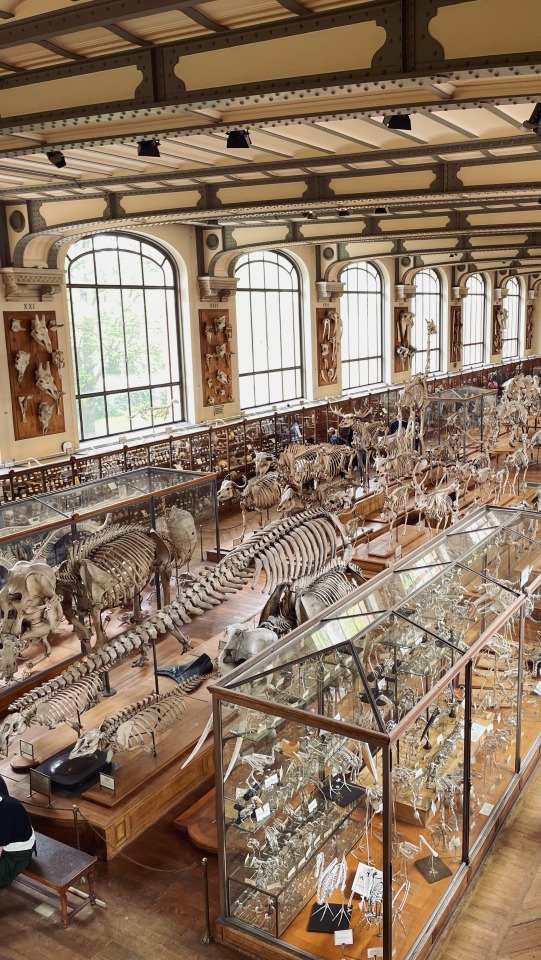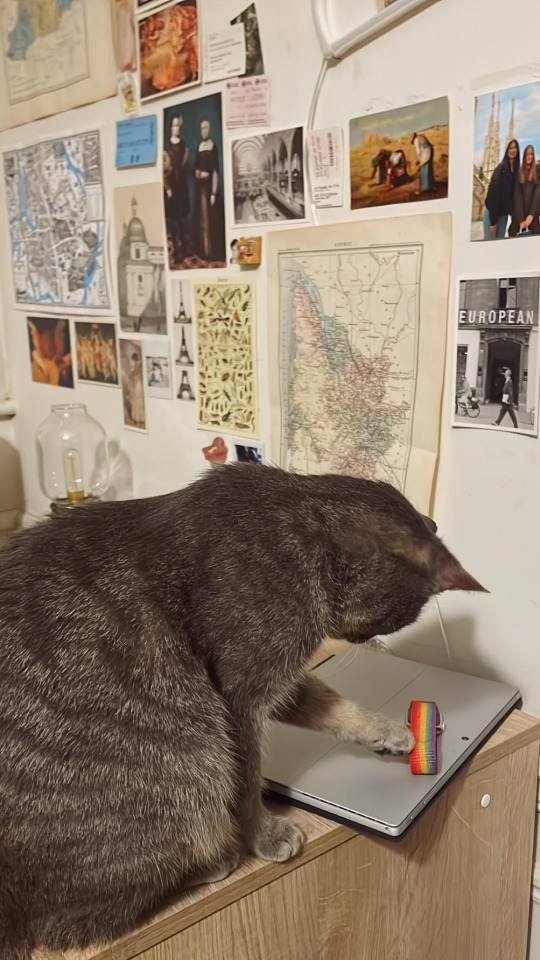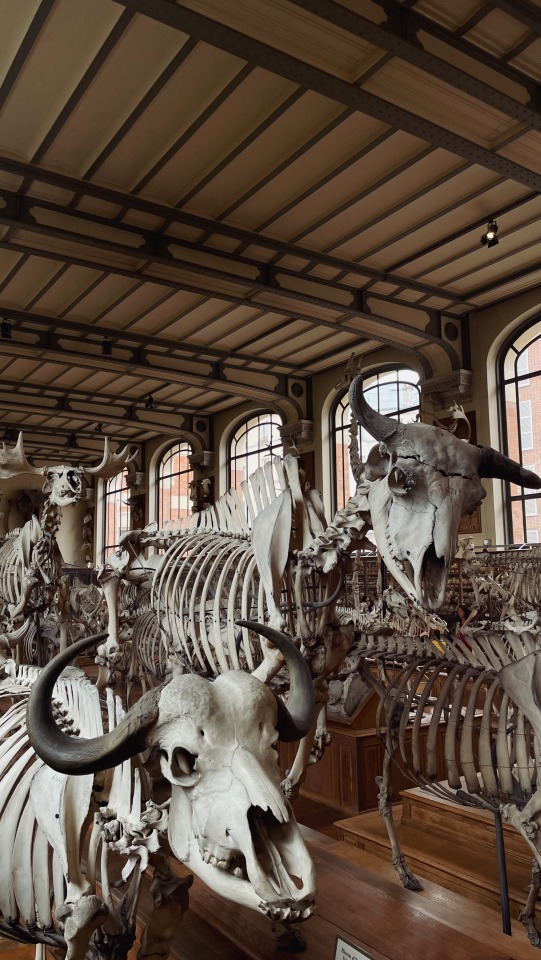Serenablakeoffice - Serena Blake
More Posts from Serenablakeoffice and Others

NGC 6946 - Fireworks Galaxy
Face on spiral galaxies are not only amongst some of the most stunning objects in the night sky, but they reveal so much about galaxies, including our very own.
This galaxy is 25.2 million light years from us, in the constellation of Cepheus & Cygnus. It's 87,000 light years in diameter (100k for the Milky Way), so not too dissimilar.
Like most spiral galaxies it has a inner core of older more yellow/red stars giving a more creamy appearance, while the outer arms are dominated by vast nebula (pink) and large blue stars that come along with active star formation, for a few million years at least.
Unlike the Milky Way, it is classified as a star burst galaxy due to the huge amount of star formation, and why it's alter-ego "Fireworks Galaxy" is fairly apt, it has experienced 10 known supernova since records began.


Spread your cosmic wings 🦋
The Butterfly Nebula, created by a dying star, was captured by the Hubble Space Telescope in this spectacular image. Observations were taken over a more complete spectrum of light, helping researchers better understand the “wings'' of gas bursting out from its center. The nebula’s dying central star has become exceptionally hot, shining ultraviolet light brightly over the butterfly’s wings and causing the gas to glow.
Learn more about Hubble’s celebration of Nebula November and see new nebula images, here.
You can also keep up with Hubble on Twitter, Instagram, Facebook, and Flickr!
Image credits: NASA, ESA, and J. Kastner (RIT)






I finished all of my psychology plus french exams and assignments! Having some free time feels like the reward~


World's oldest persevered wedding cake, baked in 1898 Victorian England
After surviving six monarchs and lasting through two different millennia, the cake bears the scars of time. In 1940, during the Second World War, the town of Basingstoke was bombed. The town center, in which the bakery was located, was hit by a bomb in August of that year. This impact caused a great deal of damage, and yet the seemingly fragile wedding cake, already approaching half a century old at the time, sustained but a single crack. This crack remains the cake’s single imperfection, but for the discoloration that has come with age and sugar seeping from the rich cake into the previously white icing.
(Source)
The Large Magellanic Cloud

The Large Magellanic Cloud (LMC) is nearly 200,000 light years from earth. The picture above shows how it consists of vast clouds of dust and gas most likely from old stars going supernova. It is a stellar nursery for stars, similar to a nebula.
Close to this is the Small Magellanic Cloud (SMC) and it is largely believed that their irregular shape is due to a collision that occurred between them thousands of years ago.
A prominent feature of the LMC is the Tarantula nebula (which the James Webb telescope recently took a high res photo of).

Sadly, those in the Northern Hemisphere never get the chance to see the LMC - it is only visible in the Southern Hemisphere!

monday morning 🥀
🎧 listen to my new ambient mix




On Sunday I got a copy of the Silent Patient from Shakespeare & Co. Despite it being incredibly touristic I actually really love coming here! People rarely spend a lot of time upstairs, so it’s always so nice to use the reading spaces to go through a quick poetry book or to do some journaling :-)
-
 my-slutblog1 reblogged this · 1 month ago
my-slutblog1 reblogged this · 1 month ago -
 transparentjeanjhacob liked this · 1 month ago
transparentjeanjhacob liked this · 1 month ago -
 noxvigil-noxtradam reblogged this · 3 months ago
noxvigil-noxtradam reblogged this · 3 months ago -
 theflyingmuffin reblogged this · 3 months ago
theflyingmuffin reblogged this · 3 months ago -
 krispyobservationdestiny liked this · 3 months ago
krispyobservationdestiny liked this · 3 months ago -
 dew-ontherocks liked this · 3 months ago
dew-ontherocks liked this · 3 months ago -
 sofie-hatter liked this · 3 months ago
sofie-hatter liked this · 3 months ago -
 stellarlovely reblogged this · 3 months ago
stellarlovely reblogged this · 3 months ago -
 kyrillas reblogged this · 4 months ago
kyrillas reblogged this · 4 months ago -
 restlesswarrior61 liked this · 4 months ago
restlesswarrior61 liked this · 4 months ago -
 justadudes-blog liked this · 5 months ago
justadudes-blog liked this · 5 months ago -
 planart liked this · 5 months ago
planart liked this · 5 months ago -
 nc3rdeye liked this · 5 months ago
nc3rdeye liked this · 5 months ago -
 astat3ofgrac3 reblogged this · 5 months ago
astat3ofgrac3 reblogged this · 5 months ago -
 melonlover19 liked this · 5 months ago
melonlover19 liked this · 5 months ago -
 rockprecionbass liked this · 6 months ago
rockprecionbass liked this · 6 months ago -
 krysaniar liked this · 8 months ago
krysaniar liked this · 8 months ago -
 poryog liked this · 9 months ago
poryog liked this · 9 months ago -
 casualearthquaketimemachine liked this · 10 months ago
casualearthquaketimemachine liked this · 10 months ago -
 rideon55 reblogged this · 11 months ago
rideon55 reblogged this · 11 months ago -
 virajsingh11 liked this · 1 year ago
virajsingh11 liked this · 1 year ago -
 heymomboruboetilnono liked this · 1 year ago
heymomboruboetilnono liked this · 1 year ago -
 greatimhereagain23 liked this · 1 year ago
greatimhereagain23 liked this · 1 year ago -
 bluemax1999 liked this · 1 year ago
bluemax1999 liked this · 1 year ago -
 gurmeeee liked this · 1 year ago
gurmeeee liked this · 1 year ago -
 mercedesalma liked this · 1 year ago
mercedesalma liked this · 1 year ago -
 solarmagickstar liked this · 1 year ago
solarmagickstar liked this · 1 year ago -
 ran7sworld liked this · 1 year ago
ran7sworld liked this · 1 year ago -
 crashpinball liked this · 1 year ago
crashpinball liked this · 1 year ago -
 hello-furry-one liked this · 1 year ago
hello-furry-one liked this · 1 year ago -
 fitoaspirin liked this · 1 year ago
fitoaspirin liked this · 1 year ago -
 dinosaurwithablog liked this · 1 year ago
dinosaurwithablog liked this · 1 year ago -
 dirgeofrazgriz reblogged this · 1 year ago
dirgeofrazgriz reblogged this · 1 year ago -
 o2funny liked this · 1 year ago
o2funny liked this · 1 year ago -
 3powertres liked this · 1 year ago
3powertres liked this · 1 year ago -
 evolvinggreywolf liked this · 1 year ago
evolvinggreywolf liked this · 1 year ago -
 jobton liked this · 1 year ago
jobton liked this · 1 year ago
